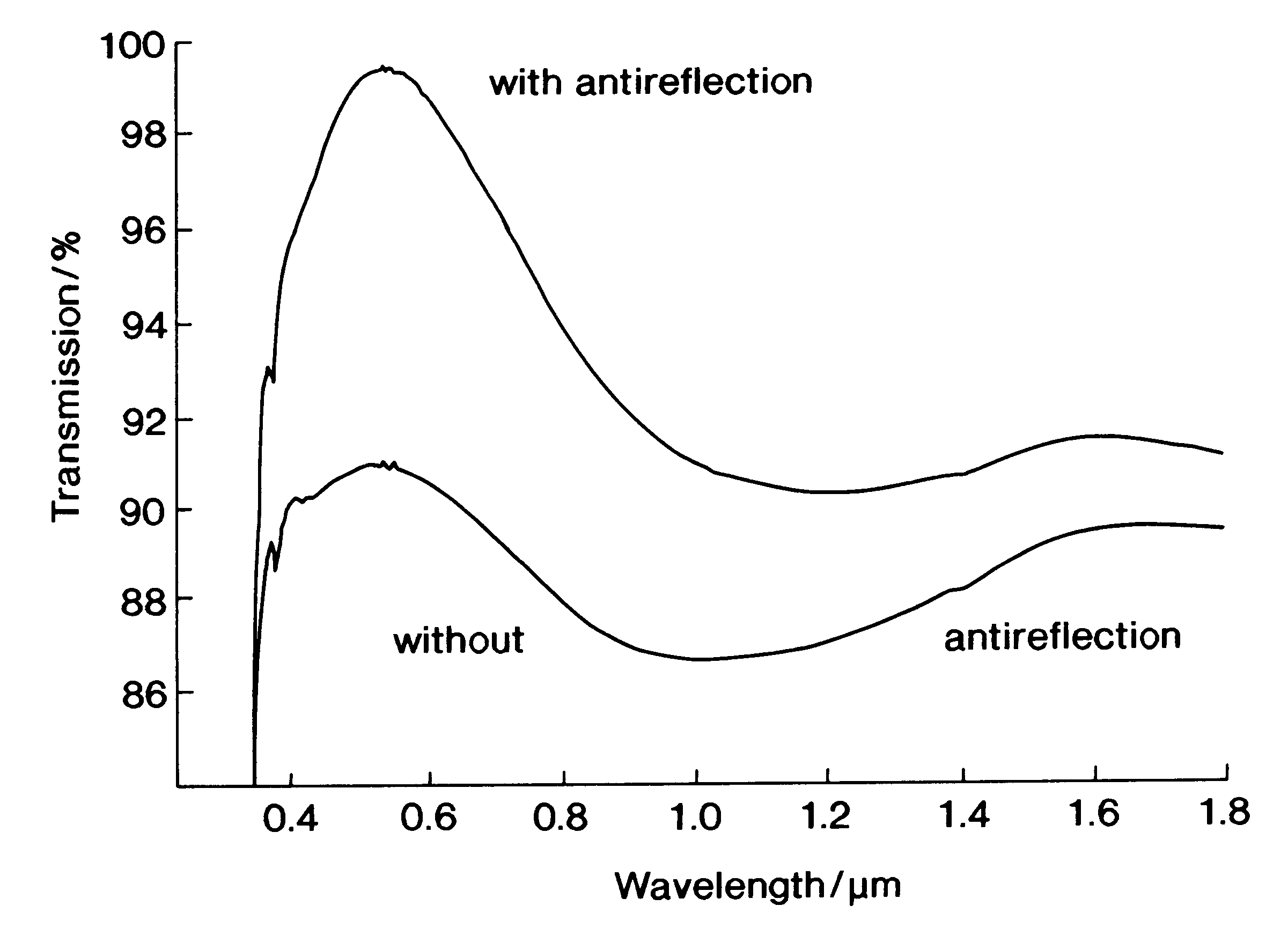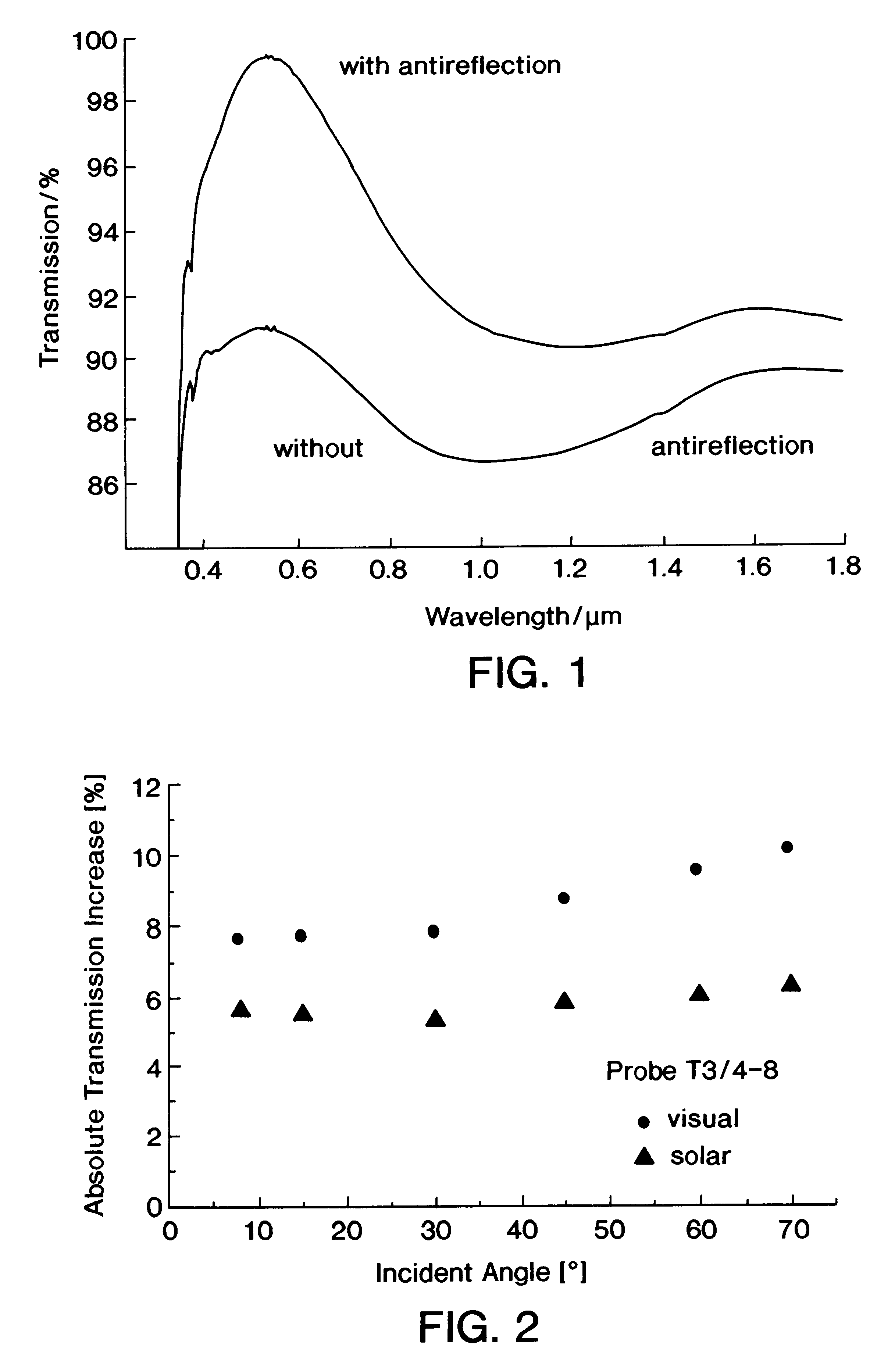Method of making an anti-reflection coating
a technology of anti-reflection coating and optical anti-reflection coating, which is applied in the direction of solar heat radiation prevention, solar ray transmission and other directions, can solve the problems of destructive interference between the reflected portion and the interface between air, the reliability of the information transmitted, and the difficulty of image identification, etc., to reduce or eliminate the reflection of electromagnetic radiation of different types
- Summary
- Abstract
- Description
- Claims
- Application Information
AI Technical Summary
Benefits of technology
Problems solved by technology
Method used
Image
Examples
example
In the presence of 27.0 g of methanol, 7.6 g of polyethylene glycol of a median molecular mass of 10,000 are dissolved in 9.5 g of ammoniacal water having a pH-value of 9,5. The resultant mixture is added to a mixture of 15.2 g of tetramethoxysilane and 80.0 of methanol. After stirring for 10 minutes, the resultant mixture is filtered. After it had aged for about 80 minutes, glass panes were coated by submersion in the mixture. To obtain a particularly uniform coating of about 100 nm the pane to be coated is fixed in the coating bath and the coating solution therein is removed free of vibration within 2 minutes. Following their coating, the panes are dried at 130.degree. C. for 30 minutes. Thereafter, their temperature is raised to 500.degree. C. at a rate of 120 K / h, and the panes are maintained at this temperature for one hour. The result is glass panes with an antireflection coating of a mauve-bluish hue. The resultant antireflection coating was found to have an index of refracti...
PUM
| Property | Measurement | Unit |
|---|---|---|
| molar ratio | aaaaa | aaaaa |
| molar ratio | aaaaa | aaaaa |
| molar ratio | aaaaa | aaaaa |
Abstract
Description
Claims
Application Information
 Login to View More
Login to View More - R&D
- Intellectual Property
- Life Sciences
- Materials
- Tech Scout
- Unparalleled Data Quality
- Higher Quality Content
- 60% Fewer Hallucinations
Browse by: Latest US Patents, China's latest patents, Technical Efficacy Thesaurus, Application Domain, Technology Topic, Popular Technical Reports.
© 2025 PatSnap. All rights reserved.Legal|Privacy policy|Modern Slavery Act Transparency Statement|Sitemap|About US| Contact US: help@patsnap.com


